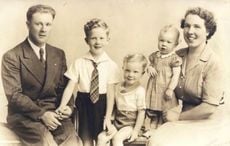Q: I applied to US Citizenship and Immigration Services (USCIS) for lawful permanent resident (green card) status, based on my marriage to a US citizen. Now we have received a notice telling us to appear for an interview. What does this involve?
A: In cases where the application for permanent residence is based on marriage to a US citizen, the main purpose of the interview is to give a USCIS officer an opportunity to meet with the husband and wife and determine whether the marriage relationship is genuine. In the past, the two normally were interviewed together from the start. Now, however, the US citizen petitioner will first be interviewed without the applicant spouse (but accompanied by the attorney if the couple has legal representation). Then the green card applicant will be asked to join the interview
The interviews generally are quite brief, and the inquiry into the couple’s marriage typically consists of two main parts.
The officer will likely ask the couple some questions that pertain to the marriage relationship. The questions can seem quite trivial, but they are designed to elicit information that would be known to people who really are living together as husband and wife. Interviewing officers have been known to ask, for example, who normally gets out of bed first in the morning, what side of the bed the alarm clock is located on, and what brand of toothpaste is used. People in a real relationship and living together would know the answers to such questions right away. Those in a sham marriage, on the other hand, would be likely to react in a way that would be suspicious to an experienced interviewer.
Second, the officer will likely ask the couple what documentary evidence of the marriage relationship they have with them, and then spend some time examining it. The types of evidence will vary from couple to couple. Relevant documents would include any of the following:
1.Birth certificates of children born of the relationship, indicating that the applicant and spouse are the parents.
2. Copies of federal and state tax returns with the “married filing jointly” filing status.
3. Evidence of joint checking, savings, or other accounts or assets (CDs, stocks, bonds, mutual funds, retirement funds, etc.), or joint obligations on loans.
4. An apartment lease or a letter from the landlord indicating that both spouses live at the apartment, or copies of rent receipts showing both parties' names.
6. If the couple own a house or condominium, deeds and mortgage and insurance documents showing joint tenancy and obligation.
7. Credit cards showing both spouses’ names on the accounts.
8. Letter from an employer showing a change in records to reflect the spouse's new marital status or showing designation of the spouse as the person to be notified in event of accident, sickness, or other emergency.
9. Evidence of life insurance policies where one spouse is designated as the other’s beneficiary.
10. Evidence of a medical or health insurance plan that has coverage for the spouse.
11. Evidence of communication between the parties during their relationship, including letters, birthday and holiday cards, telephone records, e-mails, and other correspondences addressed to the parties.
12. A religious marriage certificate if the couple was married in a religious ceremony.
13. Copies of gas, electric, telephone, cable, and other utility bills showing both parties’ names (or at least the same mailing address).
14. Evidence of joint ownership of an automobile (title, insurance, registration). (If one spouse owns the car, at least it could be shown that the other is covered as a driver on the insurance policy.)
15. Evidence of vacations and other trips taken together, including airline tickets and hotel bills.
16. Evidence of major purchases made together, such as computers, televisions, major appliances, etc., including any financing documents.
17. Photographs that show both spouses together, and with family and friends. These can be taken at the wedding, at other functions or events, and throughout their relationship.
Occasionally the officer also will ask about the affidavit of support (Form I-864) filed by the US citizen spouse or a joint sponsor. If tax returns have been filed since the original application was submitted, it is a good idea to have them at the interview. Also, it is advisable to have a few recent pay stubs for the financial sponsor, as well as an updated letter from the employer indicating the salary currently earned.
If you have questions about this or any other aspect of immigration law, visit one of IIIC’s weekly clinics advertised in the Emigrant for a free, confidential consultation.
Disclaimer: These articles are published to inform generally, not to advise in individual cases. Areas of law are rapidly changing. US Citizenship and Immigration Services and the US Department of State regularly amend regulations and alter processing and filing procedures. For legal advice seek the assistance of an IIIC immigration specialist or an immigration lawyer.
Irish International Immigrant Center
100 Franklin Street, LL-1, Boston, MA 02110
Telephone (617) 542-7654; Fax (617) 542-7655
Website: www.iiicenter.org Email: [email protected]
An organization accredited by the US Department of Justice




Comments